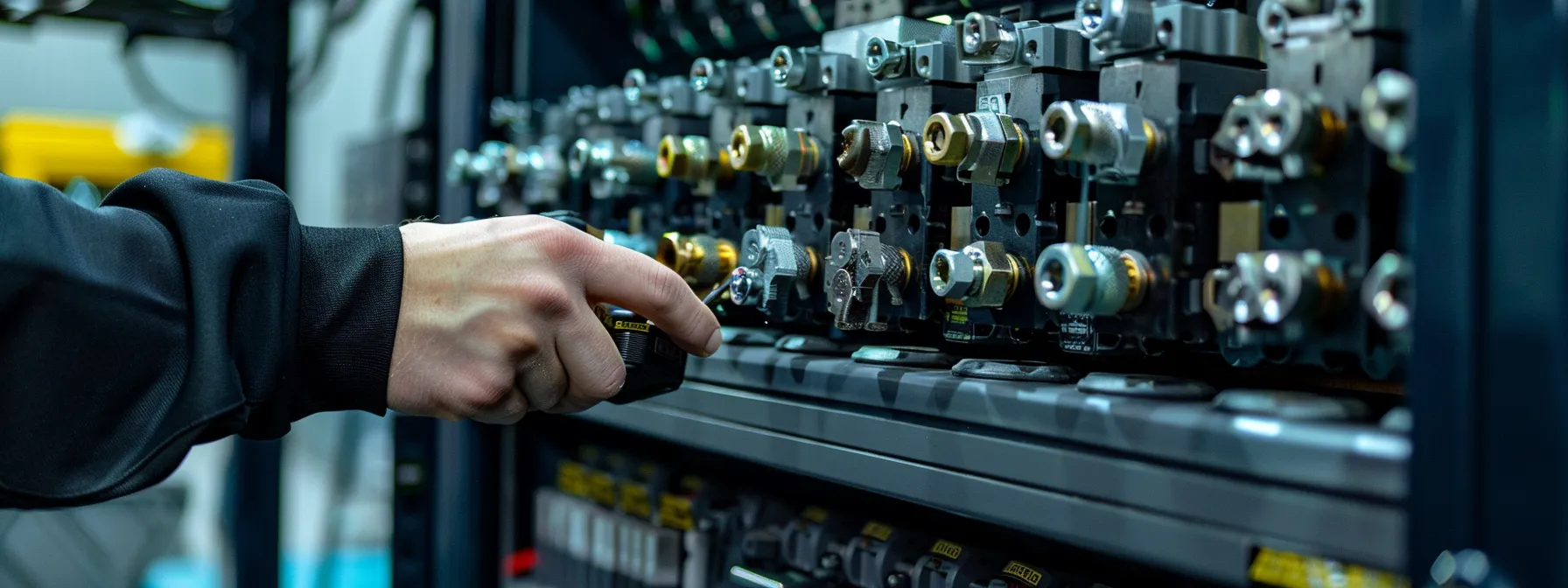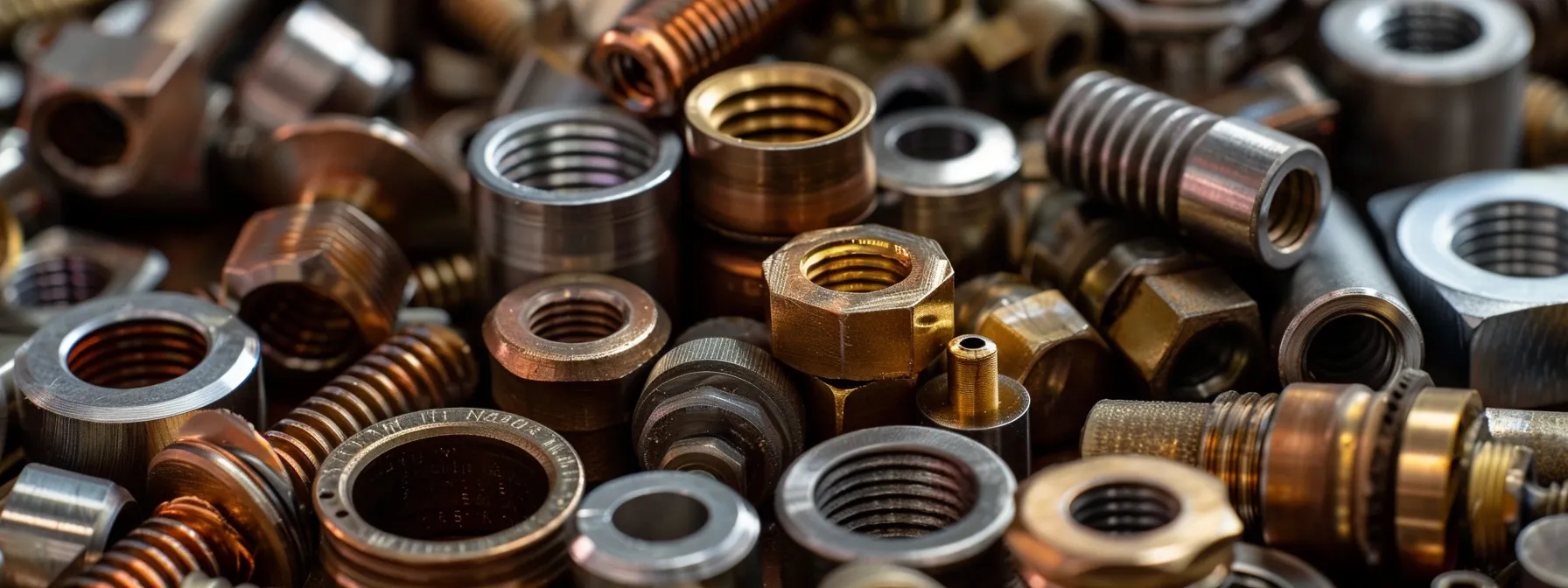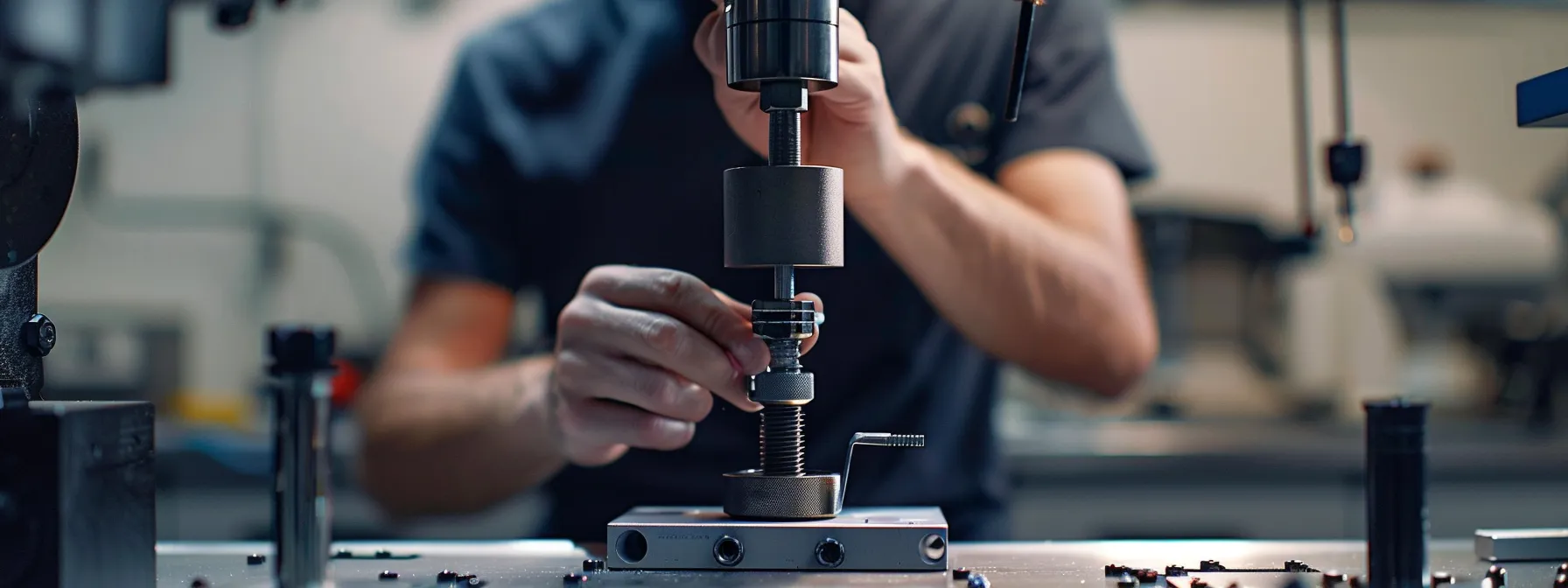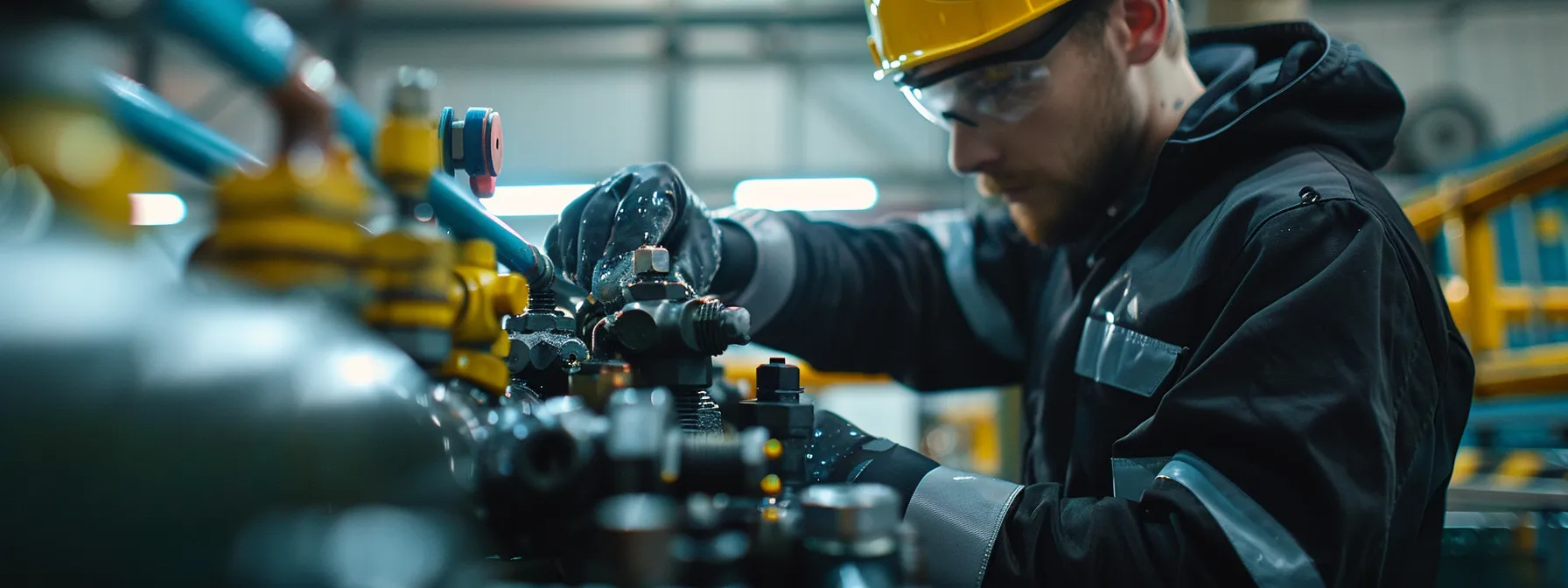Table Of Contents:
- How to Select the Right Zerk Fitting for Your Needs
- Key Takeaways
- Understanding Zerk Fitting Types and Their Uses
- Identify the Main Types of Zerk Fittings
- Match Zerk Fittings to Their Application Environments
- Consider the Material Compatibility for Your Machinery
- Assessing the Size and Thread Requirements for Your Zerk Fittings
- Determine the Thread Size Needed for Your Equipment
- Learn How to Measure Existing Fittings for Replacement
- Choose Between Metric and SAE Thread Standards
- Selecting the Right Angle for Zerk Fittings
- Understand the Importance of Fitting Angle Selection
- Distinguish Between Straight, 45-Degree, and 90-Degree Fittings
- Identify the Best Angle for Easy Access and Efficient Lubrication
- The Role of Material in Zerk Fitting Durability
- Compare Steel, Stainless Steel, and Brass Zerk Fittings
- Evaluate the Operating Environment for Corrosion Resistance Needs
- Factor in the Material’s Impact on the Fitting’s Lifespan
- Installation Tips for Zerk Fittings
- Prepare the Installation Site Properly
- Follow Best Practices for Screwing in Zerk Fittings
- Utilize the Right Tools to Avoid Damaging the Fittings
- Maintenance Practices for Long-Lasting Zerk Fittings
- Implement Regular Inspection Schedules
- Clean Fitting Points Before and After Lubrication
- Recognize When to Replace Worn-Out Zerk Fittings
- Conclusion
How to Select the Right Zerk Fitting for Your Needs
Zerk fittings, often unnoticed components, play a pivotal role in machinery maintenance within diverse sectors, from shipping to the automotive industry. They ensure that vital lubrication reaches complex assemblies like truck axles or pump gears, keeping them operating smoothly. These small but crucial elements can range from simple metal pieces to specially designed plastic variants, each suited to varying environmental stresses and operational demands. In this article, you’ll learn how to pinpoint the zerk fitting that meets your specific needs, ensuring your machinery’s longevity and performance. Prepare to dive into the intricacies of these seemingly modest parts and discover how proper selection can lead to significant improvements in your equipment‘s maintenance regimen.
Key Takeaways
- Correct zerk fitting choice is critical for machinery lubrication and maintenance efficiency
- Material selection for zerk fittings should match the environmental conditions and machine requirements
- Knowing the correct thread size and angle is essential for proper zerk fitting installation
- Regular inspection and maintenance of zerk fittings prevent lubrication problems and machine downtime
- Zerk fitting installation requires precise tools and techniques to maintain system integrity
Understanding Zerk Fitting Types and Their Uses

When selecting the appropriate zerk fitting for your operational needs, understanding the intricate distinctions between the various types becomes as critical as the precise drill used for machine maintenance. Each type of zerk fitting offers a unique method of grease injection, ensuring that your machinery remains well-lubricated and functioning at peak performance. Like fitting the right coupler to a machine, choosing the correct zerk can dramatically streamline maintenance procedures. Moreover, it’s an investment towards the longevity of your equipment, almost akin to a strategic business payment towards ongoing machine health and efficiency. In the sections that follow, I’ll delve into identifying main types of zerk fittings, how to match them to their optimal application environments, and the significance of material compatibility for your machinery. The goal is to equip you with the knowledge to make informed decisions, reflecting on the various factors that contribute to the right fitting choice.
Identify the Main Types of Zerk Fittings
As a professional in the field, it’s imperative to recognize the main types of zerk fittings that act as essential accessories for lubrication systems. These fittings come in various forms, each designed to be affixed to machinery using a specific screw in angle that optimizes grease flow. From the straight shooter to the right-angle connector, each tool plays a pivotal role in ensuring effective lubrication and maintenance of equipment.
| Type of Zerk Fitting | Common Use | Preferred Screw Angle |
|---|---|---|
| Straight | Direct line lubrication | 180 degrees |
| Right Angle | Hard-to-reach places | 90 degrees |
| 45-Degree | Angled access without full right angle | 45 degrees |
Match Zerk Fittings to Their Application Environments
The selection of a zerk fitting is heavily influenced by the environment in which it will be employed, especially when dealing with heavy equipment. A stainless steel zerk fitting is frequently the most prudent choice for machinery exposed to corrosive elements or extreme temperatures, providing durability against these harsh conditions. Furthermore, the inclusion of a button head can be advantageous for areas where higher pressure is needed and a valve must be accessed swiftly and efficiently to maintain constant lubrication.
Consider the Material Compatibility for Your Machinery
Ensuring the zerk fittings you select are compatible with your machinery’s material is paramount, whether you’re maintaining a steel-based vehicle or a small utility cart. For instance, a ball check at the head of a zerk fitting must fit securely within the housing to prevent leaks; opting for a fitting with a steel composition could be robust enough to handle rigorous use with vehicles, while a similar fit for a hose on a lightweight cart might not require such heavy-duty material.
Armed with a clear grasp of the various Zerk fitting types, we now turn our attention to the critical aspect of sizing and threading. Ensuring precision in these parameters is the key to flawless functioning and longevity of your machinery.
Assessing the Size and Thread Requirements for Your Zerk Fittings

Securing the right fit for bearings and other components begins with an accurate assessment of the zerk fitting’s size and thread pitch. Different brands and construction machinery may have varying thread standards, which could potentially result in a misfit if not measured with precision. To avoid a scenario where a rivet or a fitting becomes an Achilles heel in your equipment‘s performance, it’s vital to first determine the thread size your machine commands. Armed with this knowledge, you can confidently measure existing fittings to ensure replacements are spot on. Whether working with metric or SAE thread standards, the key is to make selections that complement your existing machinery and uphold its functionality.
Determine the Thread Size Needed for Your Equipment
Determining the precise thread size necessary for your equipment is essential; without this step, you might find yourself with a zerk fitting that refuses to accommodate your wrench, much like a square peg in a round hole. Picture a scenario where an incorrect thread size means the difference between a secure fit and the frustration of cross-threading—a situation that could require a zinc-plated solution, or a special adapter. Before you take the grease gun to your machinery, double-check thread measurements, not with a hammer and guesswork, but with a proper gauge and a meticulous eye for detail.
- Verify the correct thread size to ensure a snug fit for the zerk fitting.
- Avoid common mistakes by not assuming a one-size-fits-all approach; use accurate tools for measurement.
- Remember that the thread size affects both the attachment of the fitting and the efficiency of the lubrication process.
Learn How to Measure Existing Fittings for Replacement
When I’m in the trenches of manufacturing, where every component counts, measuring an existing zerk fitting for replacement becomes as routine as calibrating a machine. I ensure the brass or steel nipple fits flawlessly, negating any chance of a leak that could disrupt equipment operation. It’s as simple as unscrewing the old fitting, gauging its dimensions, and threading count carefully to match it with an identical piece for a seamless transition.
Choose Between Metric and SAE Thread Standards
Navigating the menu of zerk fittings, it becomes evident that the decision between metric and SAE thread standards is not unlike choosing between programming languages like javascript for web development — it must be deliberate and compatible with the existing system. My experiences have taught me that while SAE threads are predominant in the US market, the metric system is widely used internationally. This distinction impacts everything from the grease gun nozzle I use to the NPT adapters I keep on hand, dictating which lubricant pathways will allow for the smooth, uninterrupted flow essential to machine operation.
Now that you’ve determined the appropriate size and thread specifications for your Zerk fittings, the next critical step awaits. Let’s focus on choosing the optimal angle to ensure peak performance and ease of maintenance.
Selecting the Right Angle for Zerk Fittings

My daily encounters with machinery maintenance have made it abundantly clear that the angle of a zerk fitting plays a pivotal role in the machine‘s lubrication efficacy. When setting out to pick the appropriate fitting, one must not only consider the screw thread compatibility, but also the angle at which the fitting will interface with the pipe or lubrication point. This careful selection can mean the difference between a hassle-free service session and one fraught with tricky maneuvering. As I scrutinize the angles available—be it the straightforward approach of a straight fitting, the accessibility afforded by a 45-degree option, or the convenience of a 90-degree connector—I make choices that maximize ease of access and enhance the efficiency of the lubrication process. It’s this attention to detail that ensures a well-oiled machine, and, ultimately, fewer maintenance headaches down the road.
Understand the Importance of Fitting Angle Selection
In my line of work, I’ve come to recognize that a fitting’s angle greatly impacts the user’s ability to connect the grease gun and effectively lubricate the machinery. Thus, my choice hinges on the spatial constraints within the equipment; I lean towards a 90-degree fitting when I’m dealing with tight spaces that a straight fitting just can’t reach, while a 45-degree fitting offers that sweet spot of accessibility and compactness where a right-angle won’t fit.
Distinguish Between Straight, 45-Degree, and 90-Degree Fittings
In my professional practice, ensuring the right fit includes paying close attention to the angle of zerk fittings, since each angle serves a specific purpose depending on the application. A straight zerk fitting provides unobstructed, linear access for the grease to flow directly into a lubrication point, ideal for unimpeded areas where alignment is straightforward. In contrast, when I encounter obstacles or spatial limitations, a 45-degree fitting gives me that necessary angled approach without needing full perpendicular access, and the 90-degree fitting offers a complete right-angle turn, paramount for reaching lubrication points obscured by surrounding components:
| Angle Type | Ideal Use |
|---|---|
| Straight Fitting | Open, easily accessible lubrication points |
| 45-Degree Fitting | Angled access in semi-restricted spaces |
| 90-Degree Fitting | Tight spots requiring a right-angle connection |
Identify the Best Angle for Easy Access and Efficient Lubrication
In the realm of machinery maintenance, the judicious selection of a zerk fitting angle is instrumental to seamless operation: It’s the distinction between effortless maintenance and unnecessary labor. As someone who understands the nuance of proper lubrication, I know that determining the best angle hinges on the ease of access to the lubrication point and the path of the grease. It’s about aligning the fitting in such a way that it allows unencumbered delivery of lubricant without the need for contortions or additional adapters.
| Angle Type | Accessibility | Lubrication Delivery |
|---|---|---|
| Straight Fitting | Unrestricted Access | Direct |
| 45-Degree Fitting | Moderate Constraints | Angled Approach |
| 90-Degree Fitting | Tight Spaces | Perpendicular Path |
Understanding the correct orientation for Zerk fittings is only the beginning. We now turn our focus to the materials, which are fundamental to the longevity and reliability of these components.
The Role of Material in Zerk Fitting Durability

In the quest to find the perfect zerk fitting, one’s choices often boil down to the material from which the fitting is crafted. Steel, stainless steel, and brass present unique attributes that set them apart, influencing durability, corrosion resistance, and ultimately, the life of the fitting within its intended application. Drawing from my professional experience, I understand that the decision involves more than just matching metal to machine—it’s about assessing the operational backdrop where the fitting will serve, gauging potential exposure to corrosive substances, and estimating the time span the fitting is expected to perform without failure. It is this careful material evaluation that can safeguard against premature wear and the untimely halt of daily operations.
Compare Steel, Stainless Steel, and Brass Zerk Fittings
Reflecting on my experiences with various zerk fittings, I’ve observed that steel fittings are generally cost-effective and robust, making them suitable for a variety of applications where corrosion is not a significant concern. Stainless steel fittings, on the other hand, stand as the superior choice for harsh environments due to their exceptional resistance to rust and chemical corrosion, thereby offering longevity in more aggressive settings. Brass fittings, distinct in their corrosion-resistant properties, offer a mid-ground solution with adequate durability and are preferred in applications where non-sparking is critical, such as in flammable or explosive environments.
Evaluate the Operating Environment for Corrosion Resistance Needs
Assessing the environment where the zerk fitting will be deployed is fundamental; saline, high-moisture, or chemically aggressive surroundings command the use of materials like stainless steel that can endure without succumbing to rapid deterioration. My hands-on experience with diverse industrial settings has taught me to give considerable weight to these factors, as doing so prevents future performance issues related to material corrosion, which could otherwise lead to costly downtime.
Factor in the Material’s Impact on the Fitting’s Lifespan
The longevity of a zerk fitting is inextricably linked to the material from which it’s made: As I’ve witnessed in countless industrial applications, selecting a zerk fitting that will withstand the tests of time and environment is central to maintaining equipment with fewer replacements. A subpar material can lead to frequent changes, interrupted workflows, and increased overall maintenance costs; it is a truth that forms the basis of my approach when advising on fitting selections.
- Steel often provides a cost-efficient solution with satisfactory durability in standard conditions.
- Stainless steel, though perhaps more expensive upfront, extends the replacement interval in harsh environments.
- Brass, favored for its non-sparking quality, fits well in industries where such safety considerations cannot be overlooked.
The endurance of your Zerk fittings relies heavily on the materials selected, a critical consideration that cannot be understated. Moving forward, let’s focus on practical advice for installing these essential components with precision and care.
Installation Tips for Zerk Fittings

Securing a zerk fitting into its rightful place is an operation that requires precision, akin to setting the hands of a clock to the exact second. Preparation of the installation site is the first vital step, ensuring that all surfaces are clean and ready to receive the fitting. When the time comes to screw in the fitting, I follow a set of best practices that include the correct alignment and application of force to avoid any cross-threading or missteps. Using the right tools during this process cannot be overstated; it is the deciding factor between a fitting that seals perfectly and one that succumbs to damage, compromising the integrity of the lubrication system. Each twist and torque applied is deliberate, with the singular goal of achieving a seal that stands defiantly against the rigors of daily operation.
Prepare the Installation Site Properly
Before introducing a zerk fitting, I take special care to clean the area, removing all debris and checking the threads for any signs of damage. This proactive step ensures that upon installation, the fitting will securely integrate into the system without any complications, preserving the integrity of the lubrication point.
Follow Best Practices for Screwing in Zerk Fittings
In my professional routine, ensuring proper installation of zerk fittings is non-negotiable; even the slightest misstep can derail operations.
| Installation Step | Details |
|---|---|
| Thread Inspection | Confirm integrity of threads to prevent cross-threading. |
| Alignment | Align fitting precisely to avoid angular misfits. |
| Tightening | Apply appropriate torque to secure the fitting without stripping. |
: Following a meticulously crafted approach, I align, insert, and secure fittings with care, turning my deep knowledge of the tools and materials into a series of exact, confident motions that culminate in a perfectly installed zerk.
Utilize the Right Tools to Avoid Damaging the Fittings
Choosing the right tools is paramount when installing zerk fittings to avoid damaging the delicate threads and surfaces. I’ve learned that using a high-quality wrench that matches the fitting’s size and a thread gauge for precision ensures that I can apply the correct torque without harm. This approach preserves the structural integrity of both the fitting and the machinery, preventing leaks that could lead to costly downtime.
- Use a thread gauge for accurate measurement before installation.
- Select a wrench that fits the zerk fitting perfectly to prevent slipping.
- Apply the appropriate torque to secure the fitting without stripping threads.
Proper installation lays the foundation for enduring performance. Let’s transition to maintaining those Zerk fittings for reliability that stands the test of time.
Maintenance Practices for Long-Lasting Zerk Fittings

Proper ongoing care is the linchpin for ensuring the longevity and reliability of zerk fittings in any machinery. Establishing a regimen that includes routine inspections is a proactive step toward preempting lubrication issues before they arise. I give considerable emphasis to maintaining the cleanliness of fitting points; this not only facilitates smooth lubrication but also guards against the ingestion of contaminants into the system. Equally vital is possessing the discernment to identify when a fitting has outlived its usefulness—recognizing the signs of wear and taking timely action to replace zerk fittings is a testament to meticulous maintenance. These practices not only extend the life span of the fittings but also contribute to the overall health and efficiency of the machinery.
Implement Regular Inspection Schedules
I prioritize establishing regular inspection schedules for zerk fittings, thoroughly examining each for signs of wear or contamination. These check-ups, conducted at intervals aligned with the machine‘s usage patterns and environmental conditions, are strategic touchpoints to evaluate if the fittings are performing optimally or require attention, thereby safeguarding against unexpected equipment downtime.
Clean Fitting Points Before and After Lubrication
Meticulous upkeep of zerk fitting points is a fundamental aspect of ensuring their longevity; before I inject grease into the system and after the procedure is complete, I am diligent in cleaning the fittings. I make sure to remove any residual lubricant along with particles that might have settled during the process, effectively minimizing the potential for blockages and contamination that could compromise mechanical integrity.
Recognize When to Replace Worn-Out Zerk Fittings
Detecting when a zerk fitting needs replacement is vital: I look for signs of distress, such as metal fatigue, damaged threads, or inability to maintain a seal, indicating that the part no longer performs its function effectively. Identifying these issues promptly allows me to prevent lubrication failures and machinery breakdowns, ensuring continuous operational efficiency:
- Monitor for visible wear, such as rust or deformation, which can impair function.
- Test for a secure fit; loose fittings can lead to leaks and contamination.
- Check for consistent grease flow; obstructions may signal interior damage needing replacement.
Conclusion
Selecting the right zerk fitting is critical for ensuring efficient lubrication and machinery longevity, with considerations for type, angle, material, and size playing pivotal roles. Failure to match the fitting with the machine‘s specific needs can lead to issues like leaks, contamination, or premature wear. Regular maintenance and proper installation using appropriate tools are essential to prevent downtime and extend the lifespan of both the fitting and the equipment. Ultimately, a meticulous approach to choosing and caring for zerk fittings sustains smooth machinery operation and can save on long-term costs associated with equipment maintenance.





